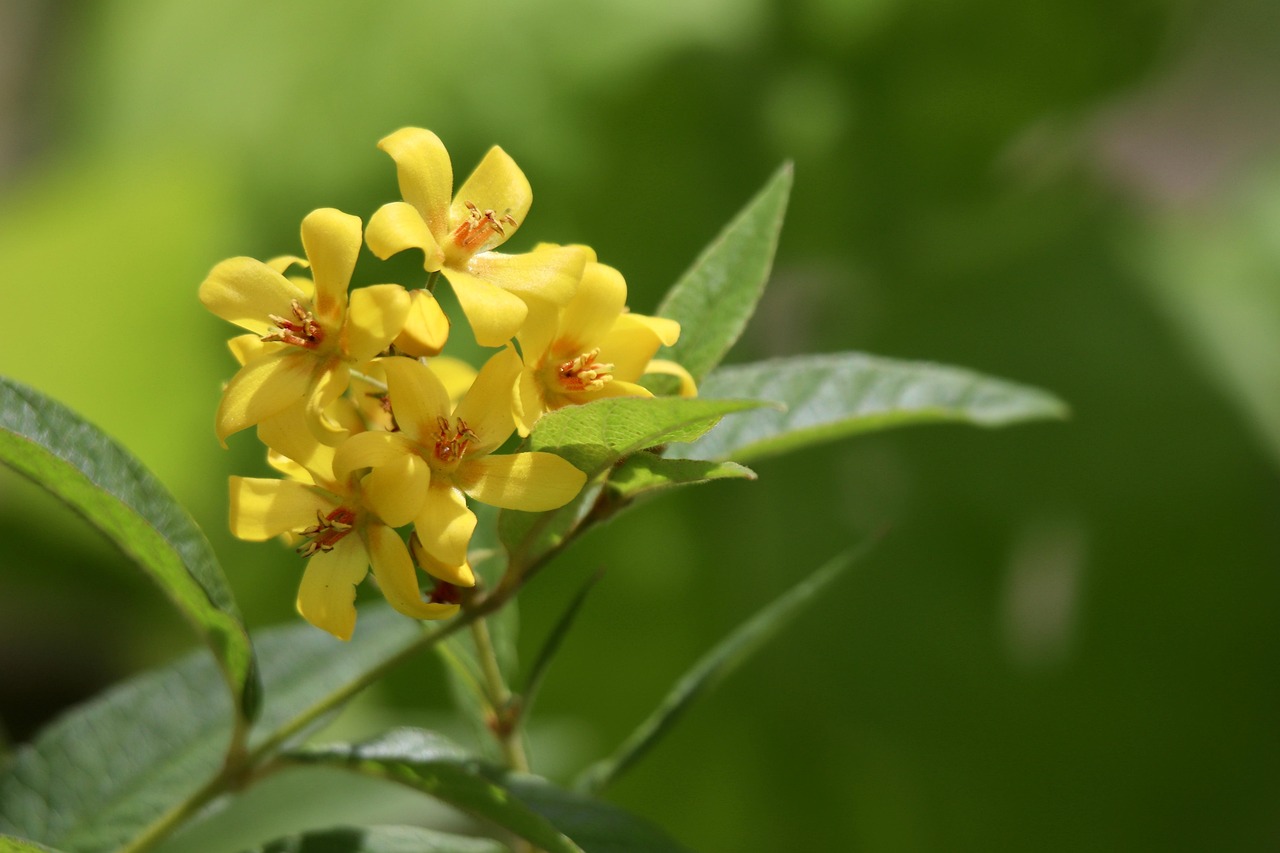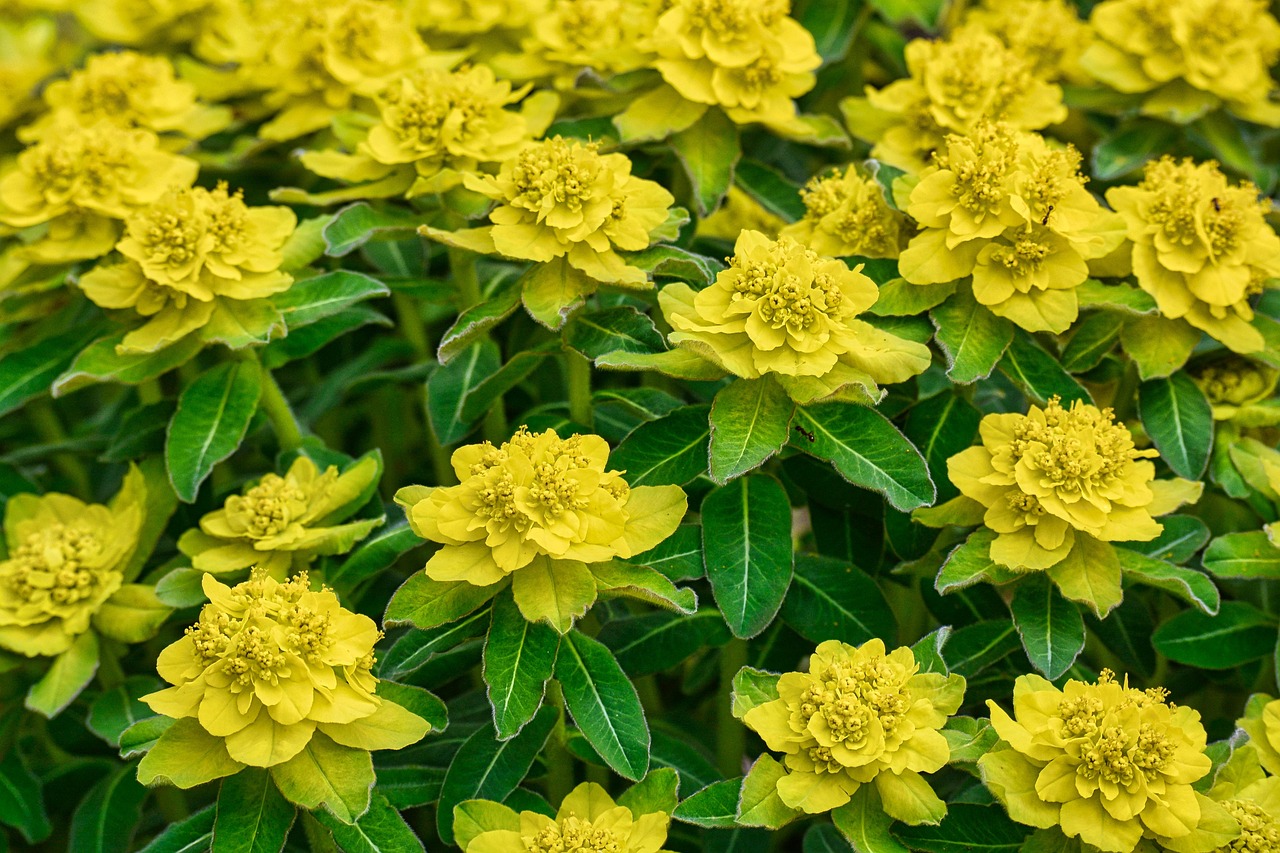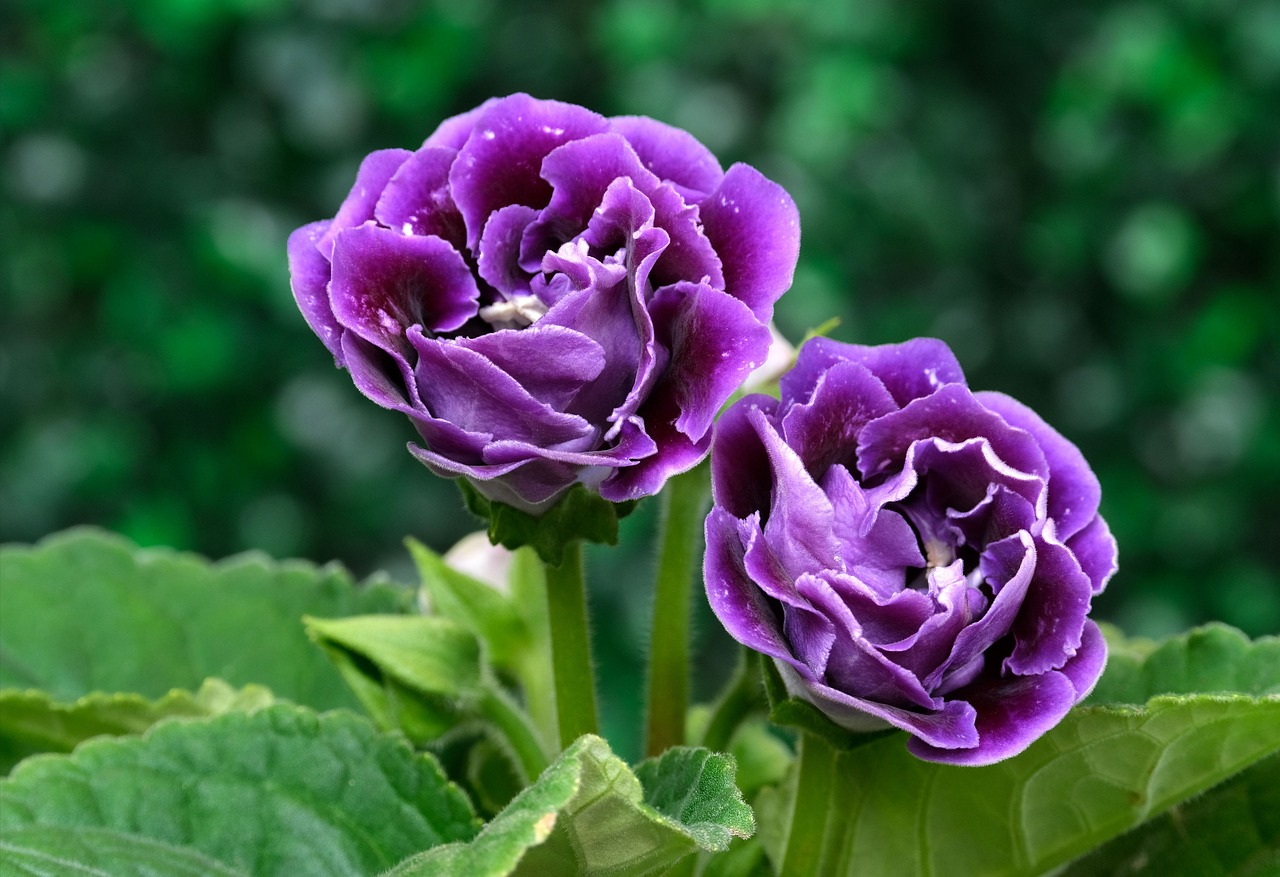Dusky Cranesbill | Features and Care
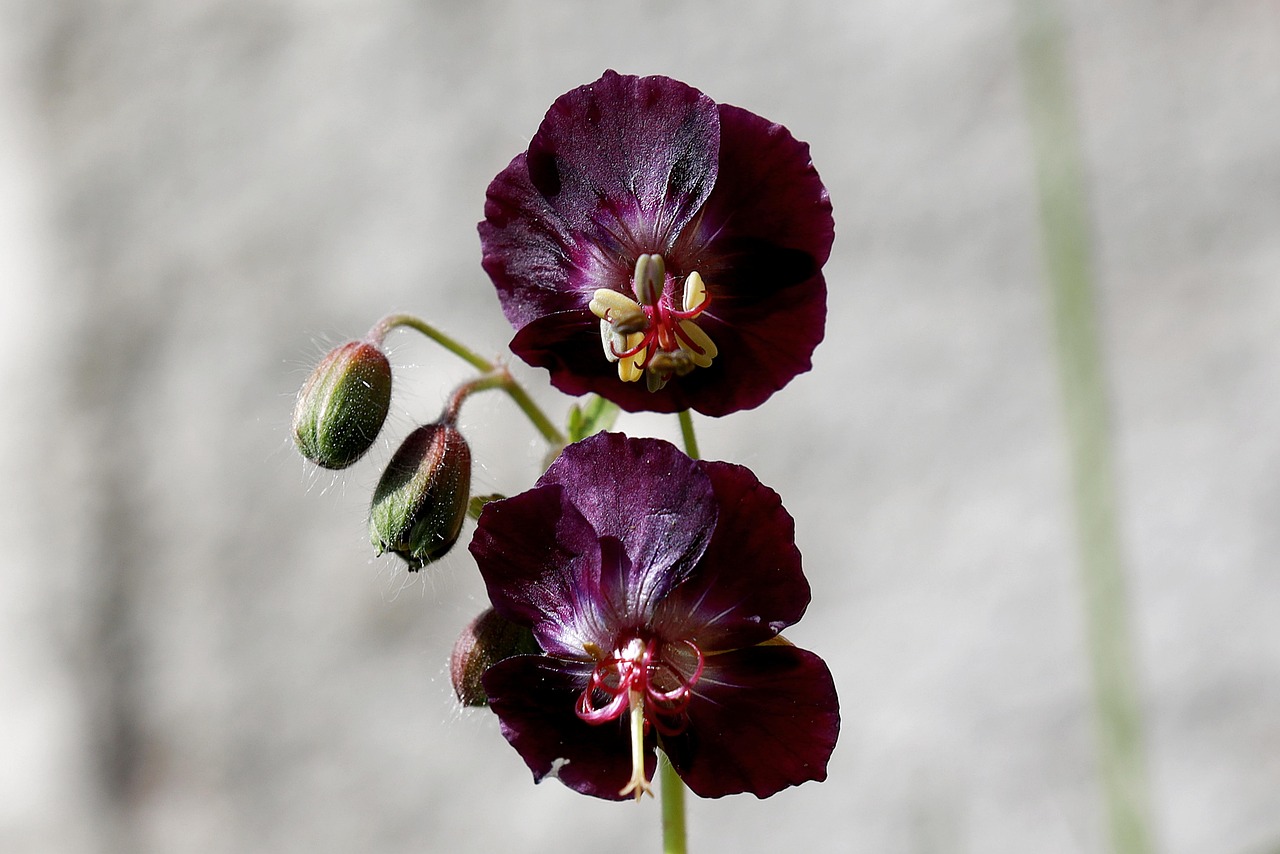
Geranium phaeum, commonly known as Dusky Cranesbill, is a perennial plant admired for its deep purple flowers and delicate foliage. With a long horticultural history across Europe, it has been widely used in traditional and modern naturalistic gardens.
This article introduces its cultural and historical background, along with detailed growing tips.
Basic Information
- Scientific name: Geranium phaeum
- Family: Geraniaceae
- Origin: Central to southeastern Europe (Alps, Carpathians, and the Balkans)
- Appearance:
The flowers are dark purple to blackish-purple, with slightly reflexed petals about 2–3 cm in diameter, blooming in clusters at the tips of slender upright stems. The deeply lobed leaves sometimes feature faint markings depending on the variety. The entire plant is covered with soft hairs, giving it a delicate touch. - Blooming season: May to June (spring to early summer)
Cultural Significance Around the World
Due to its wild appearance and tolerance for shade, Geranium phaeum is widely valued in “woodland gardens” in countries such as the UK, Germany, and Austria. In the UK, it became especially appreciated as garden styles shifted from formal layouts to naturalistic designs after the Victorian era, blending well with ferns and other perennials in shaded settings.
In urban gardening contexts, this plant is appreciated as one that “brightens the shade,” often used under trees or on the north sides of buildings. In the Netherlands and Belgium, it is also integrated into small urban gardens and community green spaces, serving both aesthetic and ecological purposes.
Historical Background
One of the earliest known references to Geranium phaeum appears in the 16th-century German herbal Neue Kreüterbuch by Leonhart Fuchs, where it was described as a black-flowered wild geranium. It was often grown in monastic gardens and herbal beds.
In the 17th century, it became known in England as “mourning widow” due to its dark flowers resembling a widow’s mourning dress. This naming reflected the strong presence of mourning culture in Britain at the time.
During the 18th and 19th centuries, garden cultivars began to appear, with selections like ‘Samobor’—a variety with dark-blotched foliage—gaining popularity. The variety name originates from the Samobor region in Croatia, where it was first identified. Today, such cultivars are featured in botanical gardens and have received recognition from institutions like the Royal Horticultural Society (RHS).
Gardening Advice
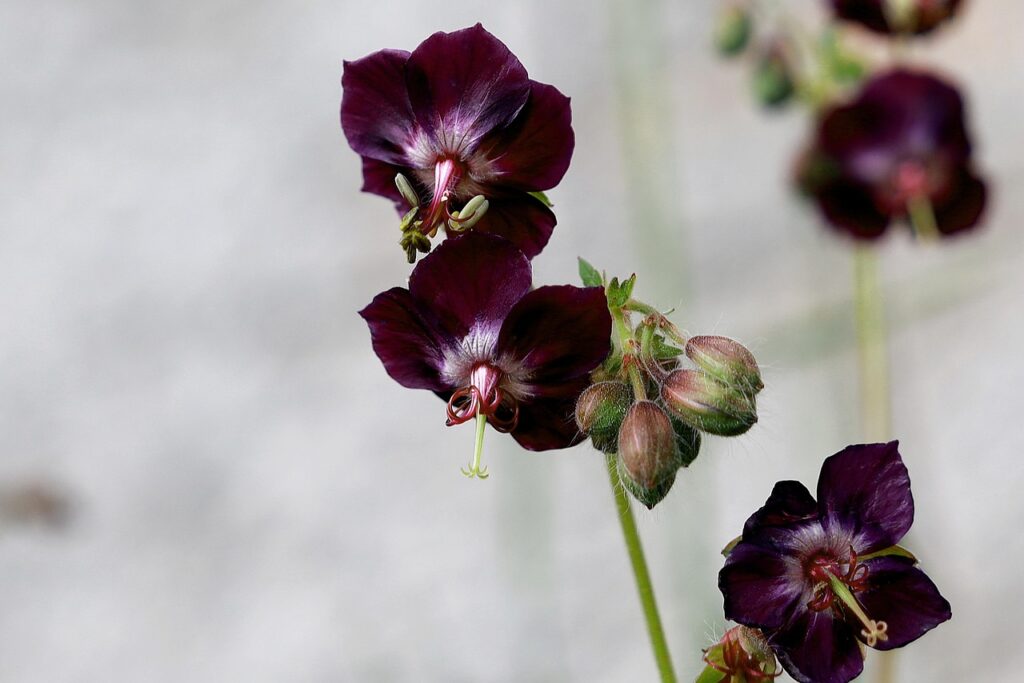
Geranium phaeum is a perennial plant that blooms even in partial shade and adds a cool elegance to garden settings. Follow the tips below to create a suitable growing environment.
Light
Prefers bright partial shade or dappled light. Avoid strong direct sunlight, which can cause leaf scorch.
Watering
Water thoroughly when the soil surface becomes dry. Keep the soil moist but not soggy, and ensure good air circulation to avoid root rot.
Soil
Choose well-drained soil with a good balance of moisture retention and air permeability. Mix in compost or pumice to create a more balanced structure.
Fertilizer
Applying slow-release fertilizer in spring and early summer helps maintain steady blooming. Supplement with small amounts of liquid fertilizer when needed.
Pruning
Cut back flower stalks after blooming to help maintain the plant’s shape. Thin out old leaves and stems to improve airflow and reduce congestion.
Overwintering
Can overwinter outdoors even in cold regions. The above-ground parts die back in winter but regrow in spring. Apply mulch around the base to protect roots from freezing.
Conclusion
Geranium phaeum is a graceful perennial with understated charm, deeply rooted in European garden culture. It has been cultivated in monastery and aristocratic gardens since the Middle Ages and named in association with mourning customs for its dark blooms.
Today, it is appreciated for its ability to add a natural touch to shaded garden areas, often used in woodland or heritage-style landscapes. Its adaptability across seasons and tranquil flowering presence make it a valued plant in both traditional and contemporary gardens.


